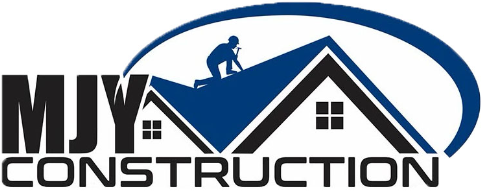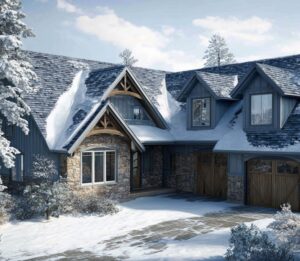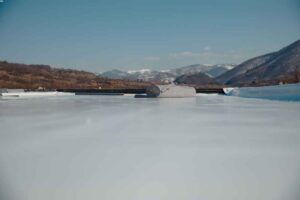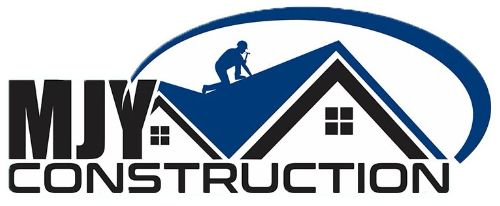Winter in New England is no time to question your roof’s durability. Between freezing temperatures, ice dams, heavy snow, and gale-force winds, your roof needs to stand strong all season long. For homeowners in Massachusetts, architectural asphalt shingles have become the go-to winter roofing materials—and for good reason.
At MJY Construction, we install high-performance Massachusetts architectural shingles that are specifically designed to resist cracking, warping, and water infiltration through the toughest winter months. Whether you’re upgrading an aging roof or building new, choosing the right shingle type can save you money, reduce maintenance, and provide reliable protection when you need it most.
What Are Architectural Asphalt Shingles?
Architectural shingles—sometimes called dimensional or laminate shingles—are a modern upgrade from traditional 3-tab asphalt. Unlike flat, single-layer 3-tab shingles, architectural versions are thicker, have a layered design, and are engineered for better strength and longer lifespan.
These shingles are often made from a fiberglass mat base with ceramic-coated granules and an asphalt coating. Their construction adds weight, durability, and enhanced wind resistance—exactly what New England homes need during the winter season.
Why Architectural Shingles Excel as Winter Roofing Materials
1. Superior Wind Resistance
New England storms often come with high winds, especially in coastal towns and elevated neighborhoods. Many Massachusetts architectural shingles are rated to withstand wind gusts of 110–130 mph, compared to the lower thresholds of traditional 3-tab shingles. That’s a big advantage during Nor’easters or winter squalls.
2. Ice Dam Resistance
Ice dams form when warm attic air melts snow on the roof, which then refreezes at the eaves, causing backup under the shingles. Architectural shingles, when paired with proper underlayment and ventilation, offer better water-shedding performance and reduced leak risk.
Additionally, the thicker profile helps reduce penetration when backed-up ice and water try to force their way in.
3. Durability in Freeze/Thaw Cycles
Winter temperatures in Massachusetts frequently fluctuate around the freezing point, which causes materials to expand and contract. 3-tab shingles are more prone to cracking and curling under these stresses.
Architectural shingles are built with multiple layers and more flexible asphalt blends, helping them resist the damage caused by these extreme changes in temperature.
4. Heavy Snow Load Tolerance
While no shingle is designed to bear the full weight of snow alone, a stronger roofing material adds a layer of confidence. Architectural shingles have higher impact resistance than 3-tab types, making them more reliable under the weight of New England snow and sleet.
Massachusetts Building Requirements for Winter Roofing Materials
The Massachusetts State Building Code requires roofing systems to meet specific standards for snow loads and weather exposure. This includes the use of:
- Ice and water shield underlayment at eaves
- Proper ventilation systems
- Secure fastening systems for high-wind areas
Choosing Massachusetts architectural shingles from a certified installer like MJY Construction ensures your home complies with local code and is fully prepped for the worst winter conditions.
You can view code requirements for roofing in Massachusetts through Mass.gov’s State Building Code resources.
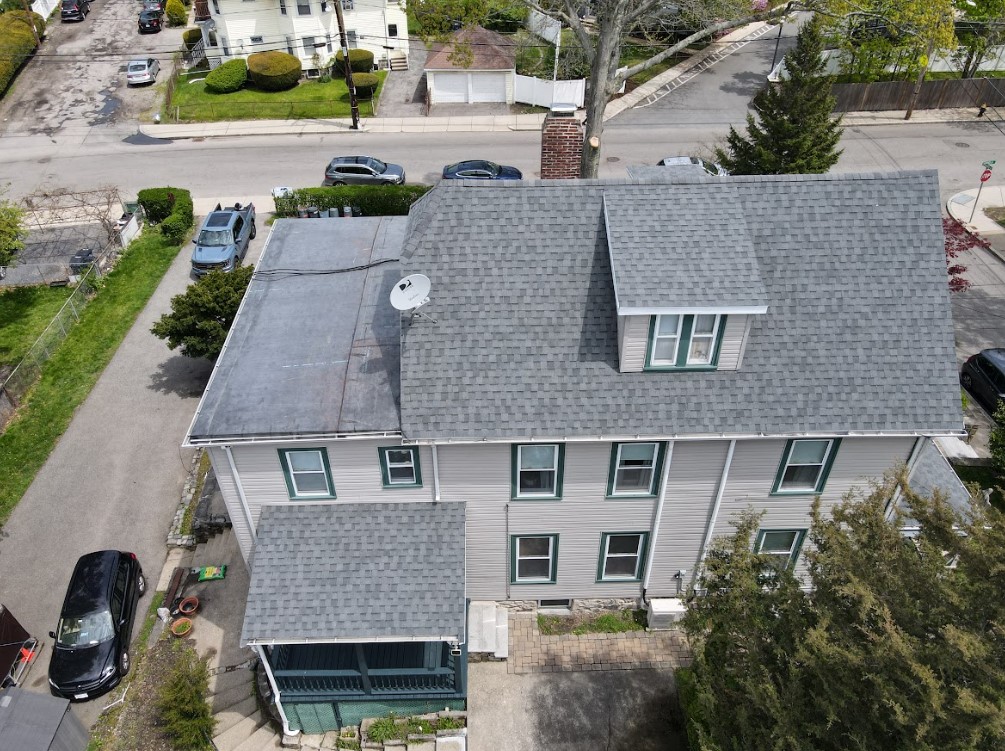
How Architectural Shingles Compare to Other Roofing Materials
| Roofing Material | Lifespan | Winter Performance | Cost | Maintenance |
| 3-Tab Asphalt | 15–20 years | Poor | Low | Moderate |
| Architectural Shingles | 25–40 years | Excellent | Moderate | Low |
| Metal Roofing | 40–70 years | Excellent | High | Low |
| Slate | 75–100 years | Excellent | Very High | High |
| Wood Shingles | 20–30 years | Poor–Moderate | High | High |
While metal and slate perform well in the winter, they come with higher upfront costs and added structural requirements. Architectural asphalt shingles strike the best balance between durability, affordability, and ease of installation—especially in Massachusetts neighborhoods where architectural continuity matters.
Key Features to Look for in Winter-Ready Architectural Shingles
Not all architectural shingles are created equal. For optimal performance in New England, look for features such as:
- Class A Fire Rating
- Algae Resistance (AR)
- Stain Guard Technology
- Impact Resistance (Class 3 or 4)
- High Wind Warranty (110+ mph)
- Color and design options to complement colonial, cape, and craftsman-style homes
Brands like CertainTeed, GAF, and Owens Corning all manufacture architectural shingles ideal for New England’s climate. MJY Construction helps homeowners compare product lines to find the best fit for your home’s style and performance needs.
Proper Installation Makes All the Difference
Even the best shingles won’t protect your home if they’re not installed correctly. Proper flashing, ice and water barrier placement, ventilation, and ridge cap installation are all essential to keeping your home leak-free during the winter.
MJY Construction installs all Massachusetts architectural shingles to manufacturer specifications, ensuring your warranty remains valid and your roof performs through every season.
Our winter-prep roofing service includes:
- Full tear-off of existing roofing
- Ice and water shield installation
- Synthetic underlayment
- Proper flashing around chimneys, skylights, and dormers
- Ridge and soffit venting to balance attic temperature
- Final inspection and clean-up
Is It Too Late to Replace My Roof Before Winter?
It’s never too late to prepare your roof for the next winter storm. While full installations are best completed before the coldest months, modern materials and techniques allow roofing projects to be completed safely and effectively through much of the year.
If your roof is leaking, missing shingles, or over 20 years old, now is the time to act. Ignoring early warning signs can lead to:
- Ice dam leaks
- Rotted decking
- Mold growth
- Insulation damage
- Higher heating bills
Why Homeowners Choose MJY Construction for Architectural Shingle Installation
Here’s why more Massachusetts homeowners trust our team:
- 20+ years of roofing experience in New England
- Fully licensed and insured in MA
- Certified installer for top shingle manufacturers
- Local knowledge of town-by-town codes and weather patterns
- No-pressure estimates and clear project timelines
- Responsive service and real customer support
Whether you’re in Brockton, Weymouth, Sharon, or anywhere on the South Shore, our roofing experts will make sure your home is prepared for harsh New England winters—starting at the top.
Ready to Protect Your Home Before the Snow Falls?
Don’t wait until the ice builds up or leaks appear. A new roof with Massachusetts architectural shingles can save you thousands in long-term maintenance, energy bills, and damage control.
MJY Construction offers no-obligation inspections and full winterization guidance so you can make the best decision for your home—before it’s too late.
Get a free inspection now and let us show you how the right shingles can protect your home through every New England season.
